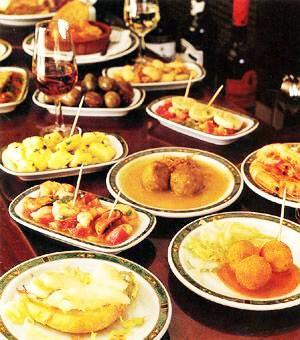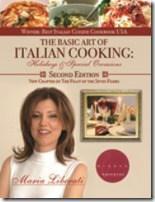Copyright 2017 Art of Living,PrimaMedia, Inc/Maria Liberati
Guest Blogger: Christina Joell
Misconceptions of Traditional Spanish Cuisine
As I sat in an upscale restaurant just below the mountain of Tibidabo in Barcelona, Spain, my nerves grew in anticipation of what was going to be placed in front of me. There were nearly twenty of us that surrounded the four sides of the table, including our tour guide who was a native Barcelonan and Catalan. She refused to tell us what we were about to eat, only that the many dishes to come were a “traditional” Catalan meal. Shortly after, waiters came back and forth with an array of dishes.

You hear the words “Spanish food” and what comes to your mind? Spicy? Tacos? Rice with tomatoes and other spices?
Well, you’re not completely wrong, but you’re not quite right either.
Mexico speaks Spanish, but the food associated to that country isn’t very similar to the food in Spain. Many (but not all) people are under the impression that because they speak the same language, that they may share similarities in their cuisine. In fact, there are many misconceptions when people think of food that is related to Spain. All the adjectives and items listed above aren’t typically related to food in Spain. Those categories are all food that is traditional in Mexico. For example, the widely-known “Spanish rice” is not a creation that’s originated in Spain. It’s solely a Mexican dish.
Mexico is known for its spices, jalapenos, Spanish rice, tacos and burritos, but Spain is not. I can’t deny that I was under the impression that Spain was going to be the same way, but I quickly learned otherwise.
What I learned from that experience in the restaurant (and about every eating experience while abroad) was that Spanish food was rarely, if ever, spicy. Even the grilled green peppers that resembled jalapenos didn’t have a kick to them. Instead, I stuck the pepper in my mouth and my taste buds were greeted with a savory flavor. The thing that surprised me was that they seemed like they should be spicy, as if the hotness of it was delayed like an old firecracker. I swallowed and still – nothing. As a lover of particularly spicy things, I was slightly disappointed. As a person who isn’t a fan of peppers, I was pleasantly surprised because they were delicious.
I was informed by many leaders of the program I was under that the thoughts I had about Spanish cuisine were wrong. It was usually savory and sometimes sweet – not the picture that I had in my head.
I had red-hot chips sent over to me from the US because I had missed the taste of spiciness. I had prompted my host mother to taste it and her eyes began to water from the intensity of them. She told me that they didn’t have any kind of snack food similar to that in Barcelona – at least to her knowledge.
Typical cuisine in Spain are items like paella (traditional rice dish), chorizo (pork), pan con tomate (bread with tomato, which is mostly Catalan based), thin slices of jámon (ham) and even many tapas such as patatas bravas. These were the types of dishes that were brought to us in the restaurant. Patatas bravas is a commonly popular tapa that can be found at nearly every bar and is composed of fried potato chunks and a creamy sauce on top. This is the closest you’ll get to a really spicy dish because the sauce is a spicy tomato sauce. It varies wherever you go. It might taste tangy in one restaurant, whereas others might have an actual kick
I’m glad to finally know the real difference between Spanish American food and authentic food from Spain
It took me three months to learn this, but it only took you to the length of this article!
For more great recipes and travel stories get your copy of the award winning book The Basic Art of Italian Cooking: Holidays and Special Occasions-2nd edition
